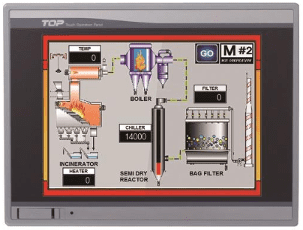
[fusion_builder_container hundred_percent=”no” equal_height_columns=”no” menu_anchor=”” hide_on_mobile=”small-visibility,medium-visibility,large-visibility” class=”” id=”” background_color=”” background_image=”” background_position=”center center” background_repeat=”no-repeat” fade=”no” background_parallax=”none” parallax_speed=”0.3″ video_mp4=”” video_webm=”” video_ogv=”” video_url=”” video_aspect_ratio=”16:9″ video_loop=”yes” video_mute=”yes” overlay_color=”” video_preview_image=”” border_size=”” border_color=”” border_style=”solid” padding_top=”” padding_bottom=”” padding_left=”” padding_right=””][fusion_builder_row][fusion_builder_column type=”1_1″ layout=”1_1″ background_position=”left top” background_color=”” border_size=”” border_color=”” border_style=”solid” border_position=”all” spacing=”yes” background_image=”” background_repeat=”no-repeat” padding_top=”” padding_right=”” padding_bottom=”” padding_left=”” margin_top=”0px” margin_bottom=”0px” class=”” id=”” animation_type=”” animation_speed=”0.3″ animation_direction=”left” hide_on_mobile=”small-visibility,medium-visibility,large-visibility” center_content=”no” last=”no” min_height=”” hover_type=”none” link=””][fusion_text columns=”” column_min_width=”” column_spacing=”” rule_style=”default” rule_size=”” rule_color=”” class=”” id=””]
A human machine interface (HMI) is a text or graphical platform that permits interaction between operators/supervisors (users) and automation equipment. Industrial HMI is the primary tool that industrial operators and line supervisors rely on to control manufacturing or industrial processes. Industrial HMIs range from simple portable interfaces that replace push buttons and switches, to complex Supervisory Control and Data Acquisition (SCADA) operator panels. HMIs are sometimes also referred to as Man-Machine Interface or operator panels or control panels.
Generally, HMI products provide various communication ports for fast communication and convenient control of a diverse range of machines, systems and facilities. Modern HMIs have capacitive touchscreens, like those found in consumer gadgets such as smartphones and tablets, to enable intuitive parameter entry and innovative ways to display data, trends and alarms. Industries such as manufacturing, building automation, home automation, smart grid, entertainment, and medical use HMI technology extensively.
[/fusion_text][fusion_separator style_type=”none” hide_on_mobile=”small-visibility,medium-visibility,large-visibility” class=”” id=”” sep_color=”” top_margin=”10px” bottom_margin=”10px” border_size=”” icon=”” icon_circle=”” icon_circle_color=”” width=”” alignment=”center” /][fusion_imageframe image_id=”1831″ max_width=”” style_type=”none” stylecolor=”” hover_type=”none” bordersize=”” bordercolor=”” borderradius=”” align=”center” lightbox=”no” gallery_id=”” lightbox_image=”” alt=”” link=”” linktarget=”_self” hide_on_mobile=”small-visibility,medium-visibility,large-visibility” class=”” id=”” animation_type=”” animation_direction=”left” animation_speed=”0.3″ animation_offset=””]https://www.avalanche-technology.com/wp-content/uploads/HMI-from-M2I-Systems.png[/fusion_imageframe][fusion_text columns=”” column_min_width=”” column_spacing=”” rule_style=”default” rule_size=”” rule_color=”” class=”” id=””]
[/fusion_text][fusion_separator style_type=”none” hide_on_mobile=”small-visibility,medium-visibility,large-visibility” class=”” id=”” sep_color=”” top_margin=”10px” bottom_margin=”10px” border_size=”” icon=”” icon_circle=”” icon_circle_color=”” width=”” alignment=”center” /][fusion_text columns=”” column_min_width=”” column_spacing=”” rule_style=”default” rule_size=”” rule_color=”” class=”” id=””]
Traditional HMI solutions were stand-alone, isolated terminals that were deployed by an OEM as part of a machine. New HMI solutions in the Internet of Things age are either pre-configured to send data to the cloud or an on-premise solution. The ability to push data to the cloud also enables engineers to integrate devices, as smartphones or tablets for example, to monitor machine and manufacturing data remotely, or simply take the HMI anywhere. As HMIs become mobile, there is now a strong push to reduce PCB size and power consumption to maximize battery life.
[/fusion_text][fusion_separator style_type=”none” hide_on_mobile=”small-visibility,medium-visibility,large-visibility” class=”” id=”” sep_color=”” top_margin=”10px” bottom_margin=”10px” border_size=”” icon=”” icon_circle=”” icon_circle_color=”” width=”” alignment=”center” /][fusion_imageframe image_id=”1832″ max_width=”” style_type=”none” stylecolor=”” hover_type=”none” bordersize=”” bordercolor=”” borderradius=”” align=”center” lightbox=”no” gallery_id=”” lightbox_image=”” alt=”” link=”” linktarget=”_self” hide_on_mobile=”small-visibility,medium-visibility,large-visibility” class=”” id=”” animation_type=”” animation_direction=”left” animation_speed=”0.3″ animation_offset=””]https://www.avalanche-technology.com/wp-content/uploads/HMI-Block-Diagram.png[/fusion_imageframe][fusion_text columns=”” column_min_width=”” column_spacing=”” rule_style=”default” rule_size=”” rule_color=”” class=”” id=””]
[/fusion_text][fusion_separator style_type=”none” hide_on_mobile=”small-visibility,medium-visibility,large-visibility” class=”” id=”” sep_color=”” top_margin=”10px” bottom_margin=”10px” border_size=”” icon=”” icon_circle=”” icon_circle_color=”” width=”” alignment=”center” /][fusion_text columns=”” column_min_width=”” column_spacing=”” rule_style=”default” rule_size=”” rule_color=”” class=”” id=””]
HMI system design is based on a microprocessor or a microcontroller that runs the software implementing the user interface. The system also includes devices for implementing touch control, graphics processing, interfacing to machines, sensors and networks. The system requires an external non-volatile expansion RAM memory to store pre-rendered graphics, messages, and to log data related to alarms and internal registers. Data and message logging require the RAM to have high endurance to survive many repeated read-write operations. This RAM also needs to be capable of fast and reliable writes in order to protect data in the event of unexpected power loss.
MRAMs or Magnetoresistive Random Access Memory are one of the latest innovations in memory. This innovative technology has the potential to combine the speed and simplicity of static RAM (SRAM), non-volatility and density of Flash memory, while consuming very low power. MRAM is capable of nearly infinite writes (10^14 write operations with 20+ year data retention exceeds the lifetime of most, if not all HMIs), resists high radiation and operates at high temperatures. Equipped with a SPI or Q-SPI interface, STT-MRAM is ideal for use in HMI applications as expansion memory.
Avalanche’s STT-MRAMs are available in discrete memory, bare-die, or embedded memory – a memory macro for System-on-Chip (SoC) design. Avalanche’s P-SRAM Gen 2 discrete STT-MRAM memory devices are available now in volume production.
Learn more about our discrete STT-MRAM devices HERE.
[/fusion_text][/fusion_builder_column][/fusion_builder_row][/fusion_builder_container][fusion_global id=”1672″]
